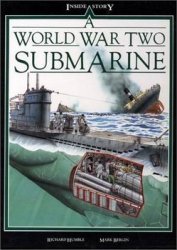1 Mikhailov, 1927, pp. 495-7. for a careful and nuanced discussion of ‘shell shortage’ on both fronts in 1914, stressing its relationship to prevailing military tactics, see Strachan, 2001, pp. 993-1005.
2 Quoted in Mal’kov, ed., 1998, p. 241 (Tiutiukin).
3 Maslov, 1918, pp. 9-10, from a letter published in Russkie vedomosti, 10 September 1914.
4 Golos (laroslavP), 22 July 1914.
5 Lincoln, 1986, pp. 64-76.
6 Izvestiia VSG, 1915, 9, pp. 76-7.
7 Petrone, 1998, p. 116.
8 Rachamimov, 2002, p. 38; Lincoln, 1986, p. 121. The prolonged siege cost the Austrian army an additional 50,000 casualties.
9 Lincoln, 1986, p. 125; Stone, 1975, pp. 136-43.
10 Lincoln, 1986, pp. 167-8.
11 Wildman, 1980, p. 89; Lincoln, 1986, pp. 125-9.
12 RGVIA f.369, op. l, d.39, ll.28-33ob. German occupation policy is discussed by Liulevicius, 2000.
13 Gherniavsky, ed., 1967, pp. 95, 147-8, 168-72, 228-30.
14 Buldakov, 1997, p. 62; Wildman, 1980, pp. 89-94, recounting the tale told by the disillusioned soldier Dmitrii Os’kin.
15 Neilson, 1984, p. 59; Lincoln, 1986, pp. 176-7.
16 Rachamimov, 2002, p. 38. Sazonov, speaking in May 1916, is quoted in McReynolds, 1993, p. 171.
17 Romania declared war on Austria-Hungary in August 1916. Lincoln, 1986, pp, 240-41, 250-51, 258; Jones, 1988, pp. 306-8. For a more sceptical assessment of Brusilov see Mal’kov, ed., 1998, pp. 632-4 (Nelipovich). Alekseev’s expenditure of artillery ammunition was comparatively modest.
18 Mal’kov, ed., 1998, p. 590 (Zhilin).
19 Bcrkevich, 1947. Sukhomlinov feared a repeat of stories that reached the Ministry of War in 1904, when troops made the ‘long journey to the theatre of battle in an alcoholic haze’. Peasant conscripts traditionally received a vodka-rich send-off. Buldakov, 1997, p. 56.
20 Gurko, 1939, p. 538 (quotation); Smirnov, ed., 1999, pp. 147-59 (McKee); Senin, 1993, p. 46; Mal’kov, ed., 1998, pp. 464-5 (Porshneva); Sanborn, 2003, p. 30.
21 Shliapnikov, 1982, p. 221; Kir’ianov, 1994.
22 Tiutiukin, 1972, pp. 78, 83; Trotsky, 1934, pp. 58-9.
23 Tiutiukin, 1972, p. 79.
24 Lohr, 2003, pp. 14-20.
25 Stone, 1975, p. 49.
26 Volkov, 1930, p. 50.
27 Prokopovich, 1918, p. 151.
28 Odinetz and Novgorotsev, 1929, p. 63.
29 Sanborn, 2003, pp. 34—5; Porshneva, 2000, p. 121.
30 Sanborn, 2003, pp. 37-8.
31 Beliaev’s report was dated 22 February 1915. Golovin, 2001, pp. 227-8.
32 Kenez, 1973; Jones, 1976.
33 Senin, 1993.
34 Kayden and Antsilerov, 1929, p. 308; Zagorsky, 1928, pp. 29-30; Saul,
2001, p. 21.
35 Barsukov, 1948, pp. 26-7; Saul, 2001, pp. 23-4.
36 l. itvinov-Falinskii, quoted in Manikovskii, 1930, volume 2, pp. 293-7.
37 Manikovskii, 1930, volume 1, p. 357; Sidorov, 1973, p. 29.
38 RGIA f. l276, op.11, d. 814, 11. 1-3, 5-16 (Memo from Association of Industry and Trade to Council of Ministers, 12 January 1915). Its paperwork was enormous: one overseas order alone generated 1,800 pages of correspondence. Bukshpan, 1929, pp. 241, 274-6; Manikovskii, 1930, volume 2, pp. 14-17; Sidorov, 1973, pp. 36-8.
39 Vasil’ev, 1939, p. 268.
40 Grinevetskii, 1919, p. 108; Bukin, 1926, pp. 105-6.
41 Supplies of coal from the Donbass to Russia’s north-west increased tenfold between 1913 and 1915, reaching 2.15 million tons. Maevskii, 1957,
Pp. 215-16. The railway system accounted for nearly half the total consumption of fuel in 1916. Grinevetskii, 1919, p. 90.
42 P&T, 1914,21 (Raffalovich).
43 Tarnovskii, 1958, pp. 18-19.
44 Claus, 1922, p. 50; Khoziaistvennaia zhizn 1916, p. 32. The net loss was slightly smaller.
45 P&T, 1916, 18 (Polupanov); Anon., Materialy, 1916-1917, volume 2; Vasil’ev, 1939, p. 268; Struve et al., eds, 1930, pp. 3-8; Golovin, 1931, pp. 164-6.
46 Sheliakin, 1930, p. 36; Gaponenko, 1970, pp. 75-6; Efremtsev, 1973, p. 105; Markevich, 2001.
47 Gatrell, 1994, pp. 150, 368; Beliaev, 2002.
48 Michelson et al., 1928, p. 87.
49 Sabler, quoted in Gal’perina, ed., 1999, p. 76, cabinet meeting on 25 September 1914. See also Prokopovich, 1917, p. 87; Michelson et al., 1928, pp. 80-89.
50 Graf, 1974, p. 392.
51 Bukshpan, 1929, pp. 253-4.
52 Struve et al., eds, 1930, pp. 443-52; Porshneva, 2000, p. 121.
53 Bukshpan, 1929, p. 268; Pokrovskii, 1925, pp. 69-81; EPR, 1957, volume 2,
54 Graf, 1974, p. 393; Florinskii, 1988, pp. 164, 166; Kitanina, 1985, pp. 62-3.
55 Graf, 1974, p. 397; Bakhturina, 2000, pp. 57-69; Prusin, 2002; Lohr, 2003, pp. 96-7. Recent scholarship emphasises the conflict between the Russian High Command, particularly lanushkevich, and the civilian administration, led by Count G. A. Bobrinskii.
56 Zagorsky, 1928, p. 17.
57 Prokopovich, 1917, pp. 69, 129; Kohn and Meyendorff, 1932, p. 166; Vainshtein, 1960, pp. 368-9.
58 RGVIA f.369, op. l, d.307,11.195-7ob.
59 The standard Soviet account is Sidorov, 1973, pp. 213-51 (first published 1945). Netesin, 1974, pp. 206-7, is less dismissive of tsarist efforts.
60 Izvestiia VSG, 1915, 20, pp. 207-10.
61 S. I. Zubchaninov, speaking to the Special Council for Refugees, 10 September 1915, RGIA f. l322, op. l, d. l, ll. lob.-2.
62 RGVIA f.2020, op. I, d. l31,1.184, Beliaev to Danilov, 24 July 1915.
63 Memorandum by Prince N. L. Obolenskii, 30 August 1915, RGVIA f.2003, op.2, d.945, 11.10.
64 Lohr, 2003, pp. 137-45; chapter 8 below.
65 Gatrell, 1999, pp. 18-19,52-3.
66 VasiPev, 1939, p. 206.
67 Sidorov, 1973, pp. 590-92.
68 Bezhenets, 4, 1 November 1915.
69 Gatrell, 1999, p. 30.
70 The total value of peasants’ assets in January 1914 was 9.9 billion rubles. Vainshtein, I960, p. 403.
71 Gatrell, 1999, pp. 78-83, 200.
72 Michelson et al., 1928, pp. 192-3.
73 Tugan-Baranovskii, 1915, p. 319.
74 Graf, 1974, p. 394.
75 Cited in Diakin, 1967, p. 81.




 World History
World History









